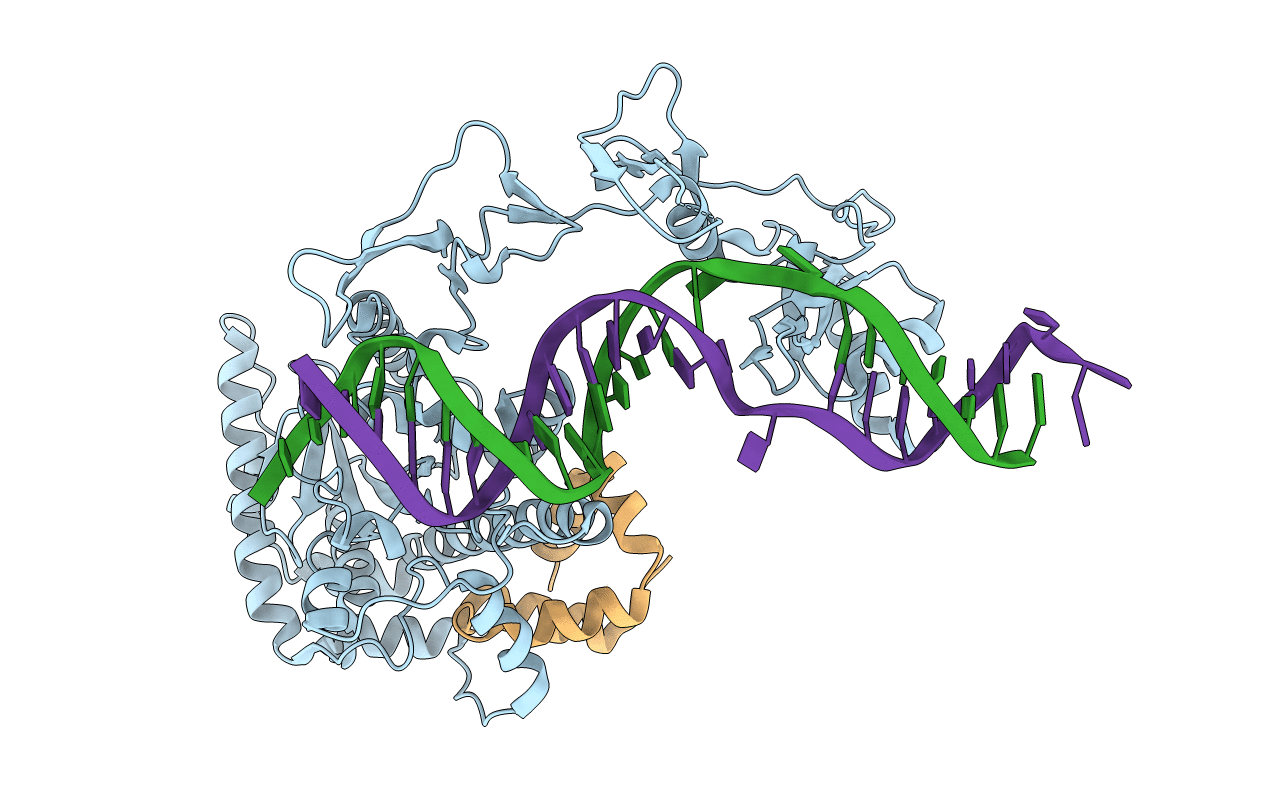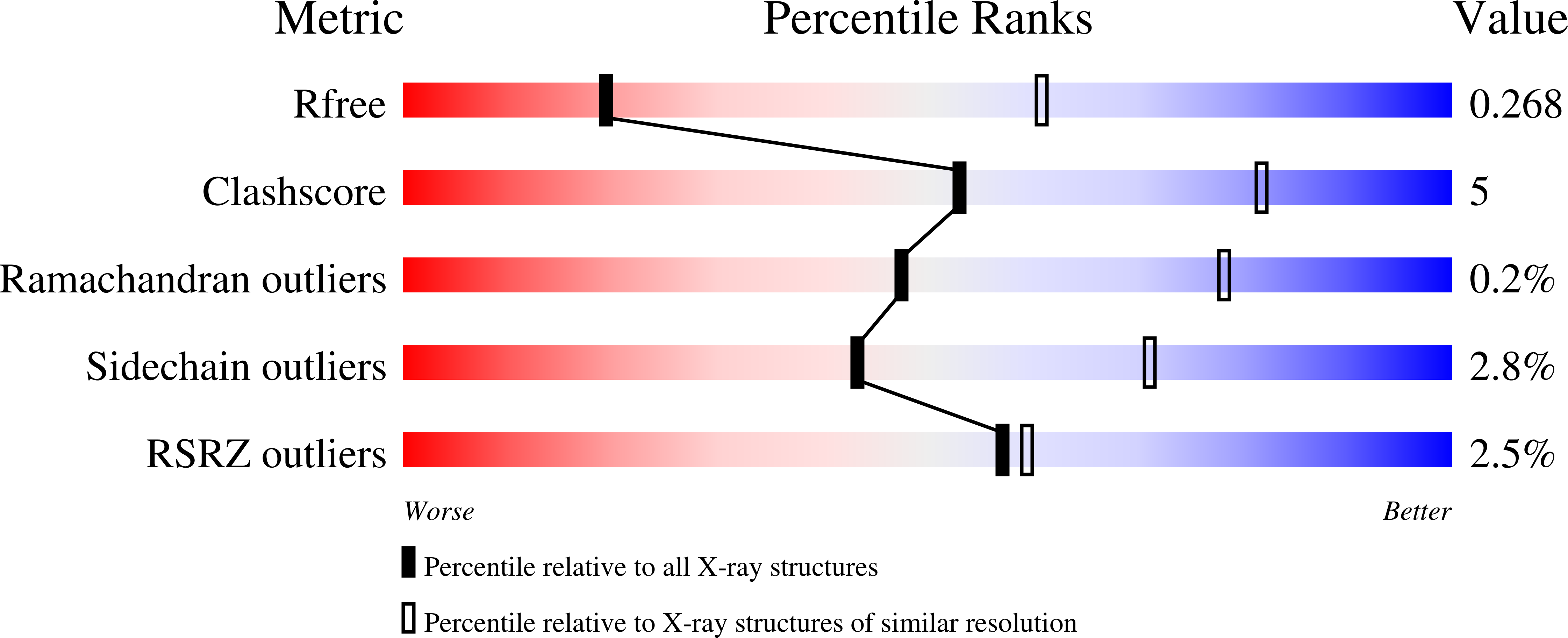
Deposition Date
2018-02-15
Release Date
2019-02-27
Last Version Date
2024-03-13
Entry Detail
PDB ID:
6CFI
Keywords:
Title:
Crystal structure of Rad4-Rad23 bound to a 6-4 photoproduct UV lesion
Biological Source:
Source Organism:
Saccharomyces cerevisiae S288c (Taxon ID: 559292)
synthetic construct (Taxon ID: 32630)
synthetic construct (Taxon ID: 32630)
Host Organism:
Method Details:
Experimental Method:
Resolution:
3.36 Å
R-Value Free:
0.26
R-Value Work:
0.21
R-Value Observed:
0.22
Space Group:
P 41 21 2


